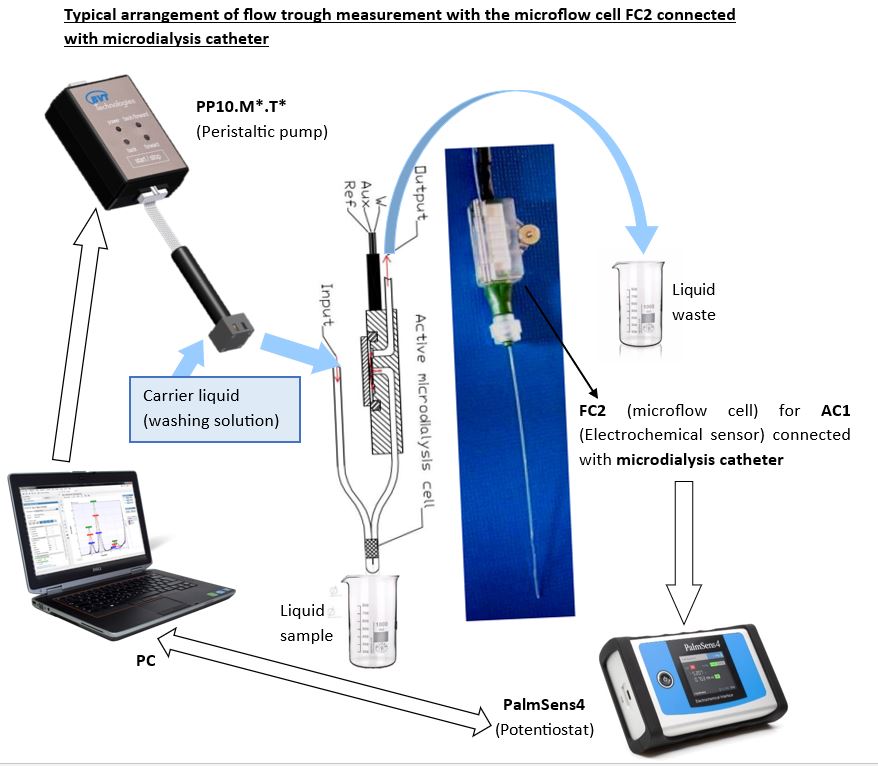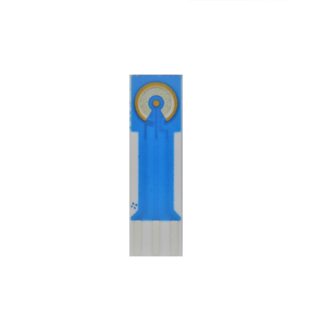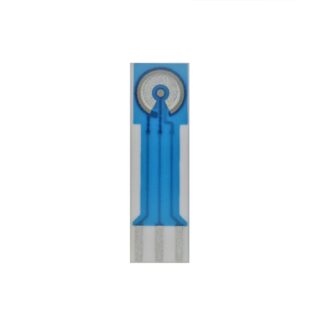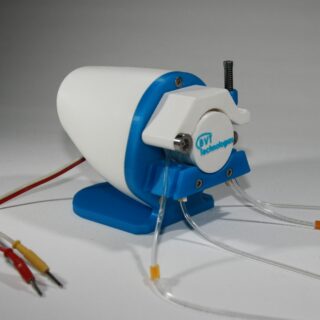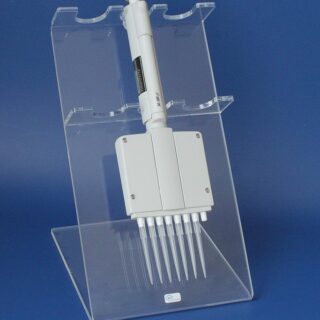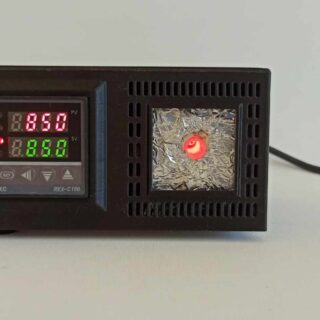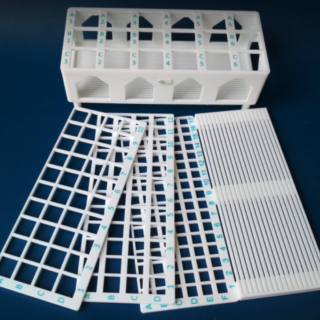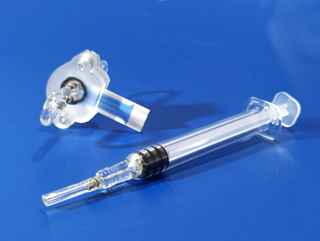Category
- Custom made glass products
- CUSTOMER SERVICES
- NEW PRODUCTS
- Sensors and electrodes
- Custom made and Modified Screen Printed Electrodes
- Stirrers
- Cables and connectors
- Cell
- Potentiostats
- Manual Screen Printer
- Minithermostat
- Pumps
- Accessories
- Kits & Sets
- Discounted SPEs (at a reduced price with visual defects/inconsistancies, but fully functional)
MDC1 Microdialysis Catheter for “in vitro” Measurement
The microflow cell FC2 (BVT Technologies, a.s.) connected with microdialysis catheter PME011 (Probe Scientific, Ltd., UK) enables continuous monitoring of low-molecular substances in circulating blood without withdrawing blood from the tested body. (The device is not approved for human use as a whole; the microdialysis catheter has the approval for medical use).
SPE electrochemical sensors and biosensors can be enclosed in the FC2 cell – e.g. the AC1.GOD sensor for measuring glucose. The advantage of this system is the defined and sterile conditions under which the sample is fed through the microdialysis catheter to the working electrode of the SPE sensor.
The device can be also used for measurement in fermentation reactors, in subcutaneous tissues or in special scientific apparatuses. The main advantage of this catheter is in a special membrane which produces a “plasma-like” or “prefiltered sample” sample without the need for blood centrifugation or deproteinization.
MDC1 makes online monitoring of different blood parameters (biochemical compounds actual concentration or kinetics of enzymatic reactions) possible. The device is also convenient for pharmacological studies. The device can be used only for non human applications.
You may also like…
-
AC1 Electrochemical sensor
Read moreBasic amperometric low cost three-electrode sensor with patented structure made by thick film technology.
Dimensions: 25.4 x 7.26 x 0.63 mm
WE material: Au/Pt, Au, Pt, Ag, C
The sensor is formed on a corundum ceramic base. On to this surface the working, the reference and the auxiliary electrodes are applied. The working and the auxiliary electrodes are made of variety of materials. At the end of the sensor there is a contacting field which is connected with the active part by the silver conducting paths which are covered by a dielectric protection layer.
A bio-chemically active substance can be immobilised on the working electrode of the sensor to create a biosensor. All sensors can be equipped with heating and temperature sensing elements. Thermistor (must be calibrated) or Pt 1000 (the response corresponds to the ISO standard) is used as the temperature sensor.
We also offer:
- working electrode made of polished gold (WE diameter 1 or 2 mm) – sensor type: AC1P.W*.R*, with homogenous surface with roughness less than 1 µm
- working electrode made of a material of guaranteed purity of up to 99.99 % (WE diameter 2 mm) – sensor type: AC1.GP
We also offer activated graphite sensors on customer request.
See activation example below:
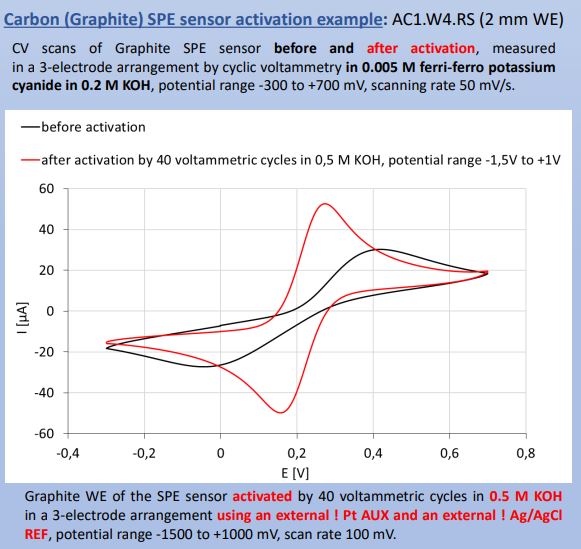
* Have a look at product cathegory Discounted SPEs – which include offer of Screen Printed Electrodes (SPEs) at a reduced Price from our AC1 line of Sensors. They are fully functional, but with visual defects or inconsistancies.
– ideal for use by students to gain handling experience and knowledge on SPEs and their uses
– ideal for initial experiments in research -
PME011 Microdialysis Catheter Microeye
Read moreMicrodialysis catheter is provided with a special membrane which produces a “plasma-like” sample without the need for blood centrifugation.
It enables “plasma-like” samples taking and continuous monitoring of low-molecular substances in circulating blood without withdrawing blood from the patient. It offers virtually real-time information. Samples can be collected for off-line analysis if required. This catheter is easy to use and reduces risks of contact with blood borne pathogens. The MicroEye is intended for intravenous use for periods up to 48 hours and is inserted via 18G blood catheter.
The range of substances that can be monitored using this catheter
- Electrolytes (such as potassium, magnesium etc.)
- Energy metabolites (glucose, lactate, pyruvate, etc.)
- Amino acids (glutamate, GABA, etc.)
- Hormones and neurotransmitters (dopamine, serotonin, etc.)
- Inflammatory mediators and growth factors (cytokines, etc.)
- Drugs and their metabolites (unbound “free fractions and /or total
-
AC1.GOD Electrochemical sensor
Read moreAmperometric Glucose Oxidase three-electrode sensor with patented structure made by thick film technology
Dimensions: 25.4 x 7.26 x 0.63 mm
WE material: Pt
Sensor Usage: Amperometric measurement of β-D-Glucose concentration in liquid samples (from 0 °C to 45 °C)
Glucose Oxidase (GOD) from Aspergillus Niger is immobilized on the active surface of a working electrode of amperometric substrate AC1.W2.RS.
The diameter of the immobilized bioactive membrane is 2 mm and the mean applied activity is 1 unit/mm2.
* For this product, we recommend our customers use the Training Service from BVT.
(https://bvt.cz/produkt/offer-of-long-term-automated-measurements-on-bvt-apparatus/)
-
2PP.T Dual Channel Peristaltic Pump
Read moreThe peristaltic pump 2PP.T* is simple device for routine laboratory use. The pump has two channels. The flow is in one direction.
The lifetime of tubing is optimized to maximal value. The pulsation is minimized for flow cell FC2.
The integrated shaft enables fastening by standard laboratory clamps. The pump is supplied by max 12V. The rotation speed is controlled by voltage. The control unit is delivered with pump.
The force on the tubing is adjusted by screw a spring. The pulsation damper can be ordered separately.
Related products
-
Activation furnance for electrochemical sensors
Read moreThe activation furnance is a device used for curing individual sensors of the AC1 type. At a defined temperature (up to 1000 °C) depending on the electrode and sensor materials. When the sensor is cured, the surface of the electrodes is cleaned from surface oxides and organic impurities, which results in regeneration of the sensor or its activation. In this way, for example, old sensors with immobilized enzyme layers can be cured for reuse – see example at the end ot the document.
-
Test Tube Stand with Interchangeable Lids
Read moreA BVT Custom Test Tube Stand for laboratory measurement needs.
The Stand’s body is a solid structure with Interchangeable Lids. The Lids can be chosen
with different Slot Sizes, for example a lid with holes of Diameter 20mm will have 40 Slots.
The amount of slots each lid has is dependent on the diameter of the holes.
Available Slot Diameters with corresponding Slot amounts:
• 11mm Diameter – 102 Slots
• 17mm Diameter – 48 Slots
• 20mm Diameter – 40 Slots
• 30mm Diameter – 18 Slots
Other Slot Diameters are available and can also be made to your required Diameters. -
SIRE Sensor Cell Set (Sensor with Injectable Recognition Element)
Read moreThe SIRE Sensor Cell Set consists of a sensor with an integrated non-removable specialised chamber.
The set also contains a syringe which will allow the injection of the recognition element (Enzyme).
The SIRE Sensor Cell uses the concept of soluble enzymes into a reaction chamber separated from the sample by a semi permeable dialysis membrane. The analyte (for example maltose), enters into the reaction chamber by diffusion. The analyte reacts with the recognition enzymes creating H2O2 which is oxidized on a screen printed Pt electrode. The current corresponds to the amount of analyte.* For this product, we recommend our customers use the Training Service from BVT.
(https://bvt.cz/produkt/offer-of-long-term-automated-measurements-on-bvt-apparatus/)


